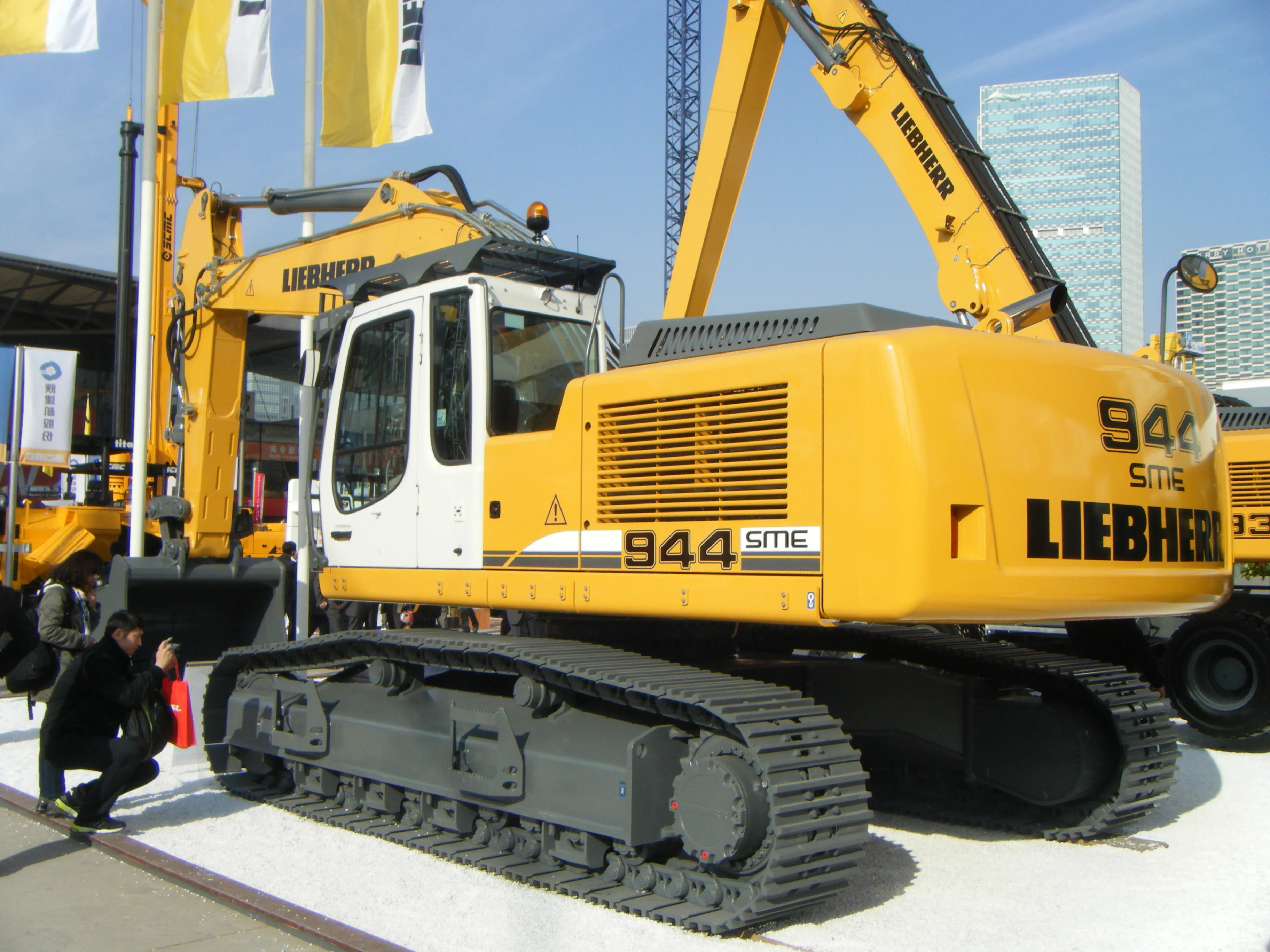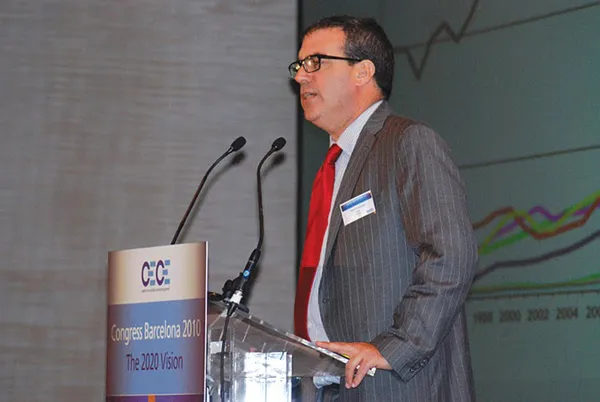The European construction equipment manufacturer’s association, CECE, has released its strongly positive Economic Report for 2014. According to this report, equipment sales in the European market grew by 9% in 2014. However a flat sales growth is forecast for 2015. The report says that 2014 was a troubled, yet good, year for the European construction equipment industry. Sales on the European market grew by 9% compared to 2013, highlighting slight growth in construction. The European construction equipment m
March 12, 2015
Read time: 4 mins
The European construction equipment manufacturer’s association, 3399 CECE, has released its strongly positive Economic Report for 2014. According to this report, equipment sales in the European market grew by 9% in 2014. However a flat sales growth is forecast for 2015.
The report says that 2014 was a troubled, yet good, year for the European construction equipment industry. Sales on the European market grew by 9% compared to 2013, highlighting slight growth in construction. The European construction equipment market has been the second most dynamic region in 2014 after the US. “This is a positive development,” said Sebastian Popp, economic expert at CECE, “…but we have to bear in mind that the good performance was just enough to recover what had been lost in 2013.” The market is still more than 40% below the record levels seen in 2007.”
Yet again, there were huge disparities: Southern Europe remains at very low absolute levels whereas markets such as the UK and Germany are not that far away from pre-crisis levels. In Europe, the industry experienced an entire economic cycle within just one year – starting strongly after a mild winter, it saw an extended summer slump followed by another pick-up of demand towards the end of the year. While the UK saw sales growth of one third compared to the already strong 2013, Turkey and Russia had a devastating year with market declines of 25% and 37%, respectively.
Sales of earthmoving equipment are back to the levels of 2012. In 2014, 135,000 units of earthmoving equipment were sold in Europe (including Russia and Turkey). This amounts to an increase of 6%. But the industry lost momentum over the year. The negative impact is particularly attributable to Russia. Another problematic market was France where the economic scenario of the industry worsened significantly. A tremendous growth of 32% pushed the UK earthmoving equipment market to the second rank in Europe, behind only Germany. The German market, already on comparably high levels, was remarkably stable and managed to further grow by almost 10%. Nordic countries were equally robust last year and grew by 10.5% on average. In Western Europe, the Netherlands (+35%), Belgium (+11%), and Austria (+14%) were strong. Southern Europe finally delivered some sign of life, albeit at an extremely low absolute level: the Spanish earthmoving market grew by 54%, the tiny Portuguese market jumped by 69%. Italy, the only remaining volume market in Southern Europe, saw a sound growth of 20%.
In terms of products, compact earthmoving equipment performed stronger than heavy equipment; this applied in particular to mini excavators and compact wheel loaders. Heavy equipment sales also grew in 2014, but the weakness of the mining and quarrying sector, lack of infrastructure investments, and the Russia crisis took its toll.
Road construction equipment was the best-performing of all sub-sectors and in 2014, the total sales growth of road construction equipment amounted to 19% compared to 2013. Rates of growth were similar across product groups: light compaction equipment sales increased by 20%, sales of self-propelled rollers were 16% above 2013 levels and sales of asphalt pavers grew by 21%. The picture looked much less friendly for the building construction equipment sector. Major reasons for this are a flat building sector in Europe after two consecutive years of decline, and a statistical base effect (strong growth of equipment demand in 2013). Total sales of concrete equipment in 2014 were 13% below previous year's levels on the European markets. Tower cranes business developed in line with concrete equipment.
The outlook for 2015 is reasonable. “It is likely that recovery will continue, however the extent of it is more questionable”, said Popp. “The European construction industry should be on a recovery path, with all three sectors of construction having a positive growth forecast.” The mining and quarrying sector might have weathered its crisis and could stimulate demand. Much uncertainty emanates from political crises, the Russia-Ukraine conflict being probably the most severe one for the European equipment industry. The flaring up of the Euro crisis could further impede the readiness of customers to invest. Against this backdrop, a flat market or a slight growth appears to be the most realistic scenario for Europe in 2015. According to the recent CECE Business Barometer, manufacturers of earthmoving and road equipment remain the optimistic ones whereas concrete equipment manufacturers are more hesitant.
The full “CECE Economic Report” with detailed figures and graphs is ready for download: %$Linker:2 External <?xml version="1.0" encoding="utf-16"?><dictionary /> 0 0 0 oLinkExternal click here Annual Economic Report false http://www.cece.eu/publications/annual-economic-report/ false false %>
The report says that 2014 was a troubled, yet good, year for the European construction equipment industry. Sales on the European market grew by 9% compared to 2013, highlighting slight growth in construction. The European construction equipment market has been the second most dynamic region in 2014 after the US. “This is a positive development,” said Sebastian Popp, economic expert at CECE, “…but we have to bear in mind that the good performance was just enough to recover what had been lost in 2013.” The market is still more than 40% below the record levels seen in 2007.”
Yet again, there were huge disparities: Southern Europe remains at very low absolute levels whereas markets such as the UK and Germany are not that far away from pre-crisis levels. In Europe, the industry experienced an entire economic cycle within just one year – starting strongly after a mild winter, it saw an extended summer slump followed by another pick-up of demand towards the end of the year. While the UK saw sales growth of one third compared to the already strong 2013, Turkey and Russia had a devastating year with market declines of 25% and 37%, respectively.
Sales of earthmoving equipment are back to the levels of 2012. In 2014, 135,000 units of earthmoving equipment were sold in Europe (including Russia and Turkey). This amounts to an increase of 6%. But the industry lost momentum over the year. The negative impact is particularly attributable to Russia. Another problematic market was France where the economic scenario of the industry worsened significantly. A tremendous growth of 32% pushed the UK earthmoving equipment market to the second rank in Europe, behind only Germany. The German market, already on comparably high levels, was remarkably stable and managed to further grow by almost 10%. Nordic countries were equally robust last year and grew by 10.5% on average. In Western Europe, the Netherlands (+35%), Belgium (+11%), and Austria (+14%) were strong. Southern Europe finally delivered some sign of life, albeit at an extremely low absolute level: the Spanish earthmoving market grew by 54%, the tiny Portuguese market jumped by 69%. Italy, the only remaining volume market in Southern Europe, saw a sound growth of 20%.
In terms of products, compact earthmoving equipment performed stronger than heavy equipment; this applied in particular to mini excavators and compact wheel loaders. Heavy equipment sales also grew in 2014, but the weakness of the mining and quarrying sector, lack of infrastructure investments, and the Russia crisis took its toll.
Road construction equipment was the best-performing of all sub-sectors and in 2014, the total sales growth of road construction equipment amounted to 19% compared to 2013. Rates of growth were similar across product groups: light compaction equipment sales increased by 20%, sales of self-propelled rollers were 16% above 2013 levels and sales of asphalt pavers grew by 21%. The picture looked much less friendly for the building construction equipment sector. Major reasons for this are a flat building sector in Europe after two consecutive years of decline, and a statistical base effect (strong growth of equipment demand in 2013). Total sales of concrete equipment in 2014 were 13% below previous year's levels on the European markets. Tower cranes business developed in line with concrete equipment.
The outlook for 2015 is reasonable. “It is likely that recovery will continue, however the extent of it is more questionable”, said Popp. “The European construction industry should be on a recovery path, with all three sectors of construction having a positive growth forecast.” The mining and quarrying sector might have weathered its crisis and could stimulate demand. Much uncertainty emanates from political crises, the Russia-Ukraine conflict being probably the most severe one for the European equipment industry. The flaring up of the Euro crisis could further impede the readiness of customers to invest. Against this backdrop, a flat market or a slight growth appears to be the most realistic scenario for Europe in 2015. According to the recent CECE Business Barometer, manufacturers of earthmoving and road equipment remain the optimistic ones whereas concrete equipment manufacturers are more hesitant.
The full “CECE Economic Report” with detailed figures and graphs is ready for download: %$Linker:







